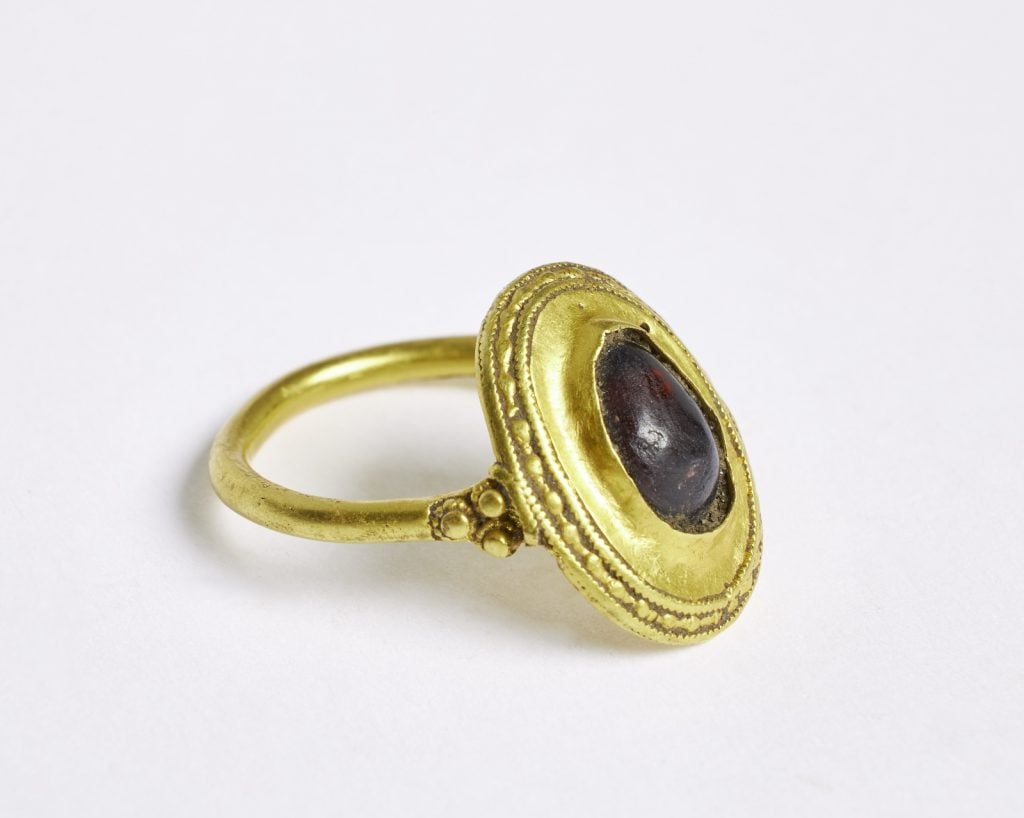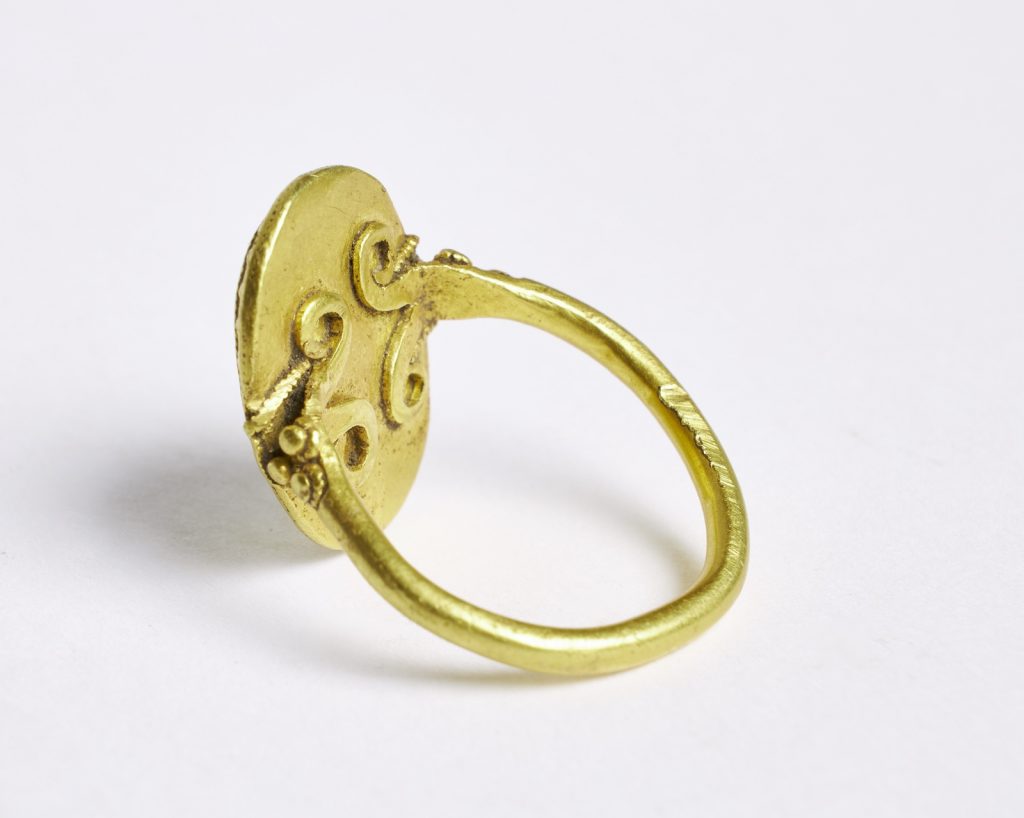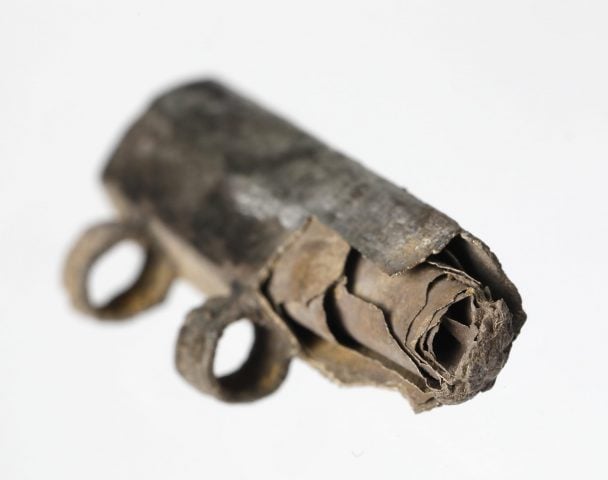Archaeology & History
Ring Discovery Reveals an Unknown Royal Family in Denmark
The jewelry suggests ties with the Merovingian rulers to the south.

A large gold ring set with a semi-precious red stone unearthed in Emmerlev, in southwest Jutland in Denmark, reveals the existence of a previously unknown royal family in the region with ties to the Merovingians, the family that ruled the Kingdom of France, a region that also covered parts of today’s Belgium and Germany.
It was pulled from the ground by 39-year-old Lars Nielsen, who gave it to the Museum Sønderjylland, in Haderslev, which in turn handed the ring over to the National Museum of Denmark, in Copenhagen.
After studying the ring, Kirstine Pommergaard, of the National Museum, said that its construction mirrors that of those worn by high-ranking Merovingians. And not only does the ring reveal the presence of a new family, she adds.
It also connects Emmerlev with one of the largest power centers in Iron Age Europe. The ring may have belonged to a prince’s daughter who married another local prince. Diplomatic gifts were often made from gold.
Pommergaard notes that the Merovingians were interested in entering into relationships with families that were able to control trade and resources in their area, and suspects that a royal family in Emmerlev may have fit the bill.

Courtesy National Museum of Denmark.
The ring’s connection to the Merovingians is confirmed by some distinctive aspects of its construction, namely spiral shapes on the underside and trefoil knobs in the transition between the ring rail and the socket with the stone.
These are characteristic of Frankish craftsmanship, which would be difficult to imitate even today, says Pommersgaard.
Other finds in the same area, notably gold and silver coins and Frisian pottery, confirm contact with the Merovingians, probably via allies in Friesland, a territory located in present-day Belgium and the Netherlands.
The red stone served as a symbol of power among Nordic peoples, while the rings of the Merovingian elite were commonly set with a coin or a plaque, like a signet ring.
Nielsen has had a replica of the ring created, which he gave to his wife as a Christmas present that he hopes will be passed down in the family.
Merovingian craftsmen were known for their skills in several areas. They were brought to England to revive glass-making there, as well as to build churches.
They were known for their construction techniques, which were taken up by the Normans. The Pushkin State Museum for Fine Arts has considerable holdings of Merovingian arts, looted from Germany after World War II.





